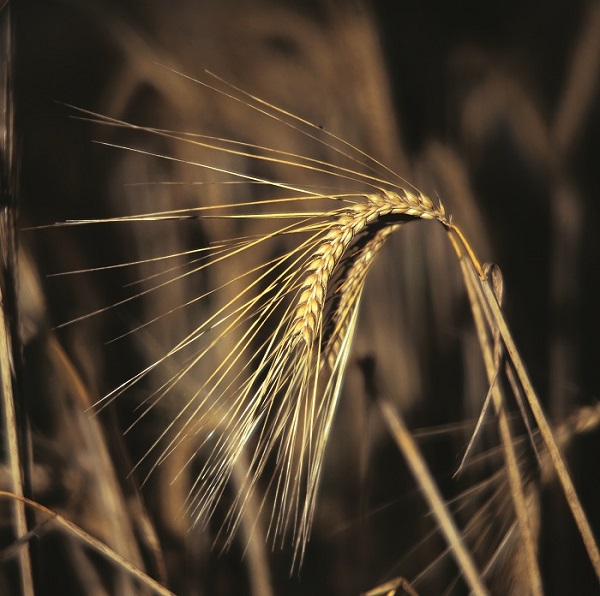Using AI to control energy for indoor agriculture
30 September 2024
Published online 29 September 2014
The Middle East has a large concentration of wild-growing crops that scientists say must be protected if we are to tackle food insecurity.

Wild-growing crops in the Middle East could be key to global food security and should be protected and utilised.
Two areas in Syria have the world’s highest concentration of these crops, known as crop wild relatives (CWR). One area is in Talkalakh in western Syria bordering Lebanon and the other is in As-Suwayda in southern Syria near the borders of Jordan and Palestine.
Other high concentrations of CWR are found throughout the Fertile Crescent area, which includes Jordan, Palestine, Israel, Syria, Lebanon, Turkey, Iraq, and Iran. Some of these important wild crops are in areas of conflict, such as those in northern Iraq.
The potential for these crops, distantly related to today’s agriculturally produced crops, lies in their gene pool, traits of which have allowed them to adapt to a diverse range of habitats.
Their gene pool has retained its diversity because they have not gone through domestication. As a result, the crops have significant potential to provide breeders with genes that could enhance crop resistance to stresses such as climate change, pests, and disease.
“As we become more and more desperate for food, the diversity we need is only going to be in these crop wild relatives,” says Nigel Maxted, a geneticist at the University of Birmingham. At the end of 2013, Maxted and colleagues published a study in Elsevier’s Biological Conservation identifying 173 priority crops and 1667 of their wild relatives. This month they announced unpublished information identifying global hotspots where protected areas could be set up to conserve CWR in their natural habitats.
If CWR become extinct before we can use them, or if we can’t have access to that material, says Maxted, people are going to starve.
According to Maxted, about 50% of the world’s current crops have their origins in the Middle East. The wild crops growing in the Fertile Crescent area include relatives of wheat, barley, oats, rye, peas, beans, and fruit trees. “If you think about temperate fruits and vegetables, then nearly every one of them comes from that area,” says Maxted.
These wild crops face threats similar to those faced by any wild species, including climate change, urbanization, over-grazing, and wild harvesting.
Decision-makers [in Fertile Crescent countries] are not yet sufficiently aware or convinced of the importance of CWR for food security
Some CWR in the Middle East are growing in conflict zones. This might not be a bad thing for the crops, Maxted explains. “You can’t do normal agriculture during conflict,” he says. “If you can’t do normal agriculture then it means the weeds will have a greater chance of survival.”
But conflict means these wild crops become inaccessible to scientists, which makes conserving them difficult.
Ehsan Dulloo, leader of the Conservation and Availability Programme at Bioversity International, adds that governments do not have the capacity to focus on conservation at times of conflict.
But global conservation of CWR has so far been lagging, largely because of a lack of clarity over their identity. Developing a CWR inventory – the work done by the University of Birmingham and funded by the Norwegian Government via the Global Crop Diversity Trust – was a vital preliminary step towards this process.
So far, only 10% of CWR are preserved in various gene banks around the world while there are no efficient conservation efforts to preserve them in their natural habitats.
Conservation of wild habitats is the responsibility of the environment sectors in many countries, says Dulloo. “There is a disconnect between the needs of the agricultural sector and what the environmental sector is doing. Very often, people working in the environment sector are unaware of CWR, mostly because they are driven by ecosystem-wide approaches or specific-species conservation activities.”
“Decision-makers [in Fertile Crescent countries] are not yet sufficiently aware or convinced of the importance of CWR for food security,” says Lamis Chalak, head of Plant Production Department at the Lebanese University.
Lebanon, says Chalak, has ratified the International Treaty on Plant Genetic Resources for Food and Agriculture but has not yet implemented it. And although the relevant draft law has been prepared, it has not yet been approved or endorsed. She blames a lack of appropriate Arab national and regional legislations and awareness of the importance of CWR. Nevertheless, several initiatives are in the development phase in the region.
The Association of Agricultural Research Institutions in the Near East and North Africa has developed a regional strategy for managing plant genetic resources for food and agriculture that includes CWR. Chalak says, however, that it has not yet been implemented.
The Food and Agriculture Organization (FAO) has a project covering Egypt, Iran, Jordan, and Lebanon that focuses on optimizing the use of the plant gene pool to help crops in adapting to climate change. One way in which this is done is through pre-breeding, in which germplasm specialists work with plant breeders to transfer genetic information from wild crops to their domesticated relatives.
“What we want to do is negotiate with governments to establish a global network of [CWR conservation] sites,” says Maxted. The purpose would be to ensure these sites are actively maintained to ensure the long-term survival of these species and the genetic diversity within them. Discussions are in process under the aegis of FAO, he says.
doi:10.1038/nmiddleeast.2014.244
Stay connected: